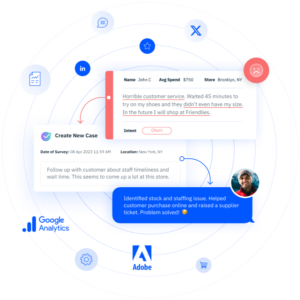Your Voice Analytics Strategy & the All-Important “Now What?” Test
When creating your Voice Analytics strategy, make sure your solution can answer the all-important ‘now what?’ test.
Let’s put this test to work against the most typical Voice Analytics solutions in EFM/VoC.
Here are a few common, yet less useful Voice Analytics scenarios:
- “I know the top ten keywords used by my customers in phone survey feedback.” (Now what?)
- “I am told I need to have a word cloud.” (Now what?)
- “My competitors were mentioned 143 times by customers!” (Now what?)
See? It’s that simple. The above scenarios cannot easily and usefully answer the “now what?” question. While they are all very interesting factoids, what practical action steps do they drive? If you cannot take action with your Voice Analytics, why bother with it at all?
Contrast those with the following useful cases:
- “My least satisfied customers complain about long hold times.” (Now what? Hire more contact center agents and/or reduce talk times.)
- “When dissatisfied with order accuracy, my drive-thru customers most often use the phrase ‘missing … toy’.” (Now what? Change the assembly process and train employees to double check that toys are included in every bag.)
These Voice Analytics scenarios easily pass the test because they lead to actions that produce measurable operational improvements. When creating your Voice Analytics strategy, make sure your solution can answer the all-important “now what?” test.
Mindshare’s focus: Insights and Action
If you’re going to collect feedback, you need to act on it. Like Text Analytics, your Voice Analytics results should be actionable and drive decisions that result in operational improvements. All analytics must pass the “now what?” test. When you see Voice Analytics results, ask yourself, “now what?” The answer should be an action that drives measurable results for a Return on Investment (ROI).
